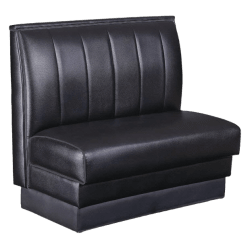The hospitality industry has witnessed a shift in its approach to the layout and décor. Restaurant interior design is no longer about meeting customer or financial demands. These days, owners of commercial venues, especially of eateries, focus on creating a one-of-a-kind dining experience when planning the layout for their establishment. As such, architects and interior designers need to design according to the needs of the owner and expectations of the customers.
A Glimpse into the Future of the Restaurant Business

Evolution of Quick Service Chains

In the digital age, tech-savvy diners are increasing in demographics. Dining out is no longer reserved for corporate managers and celebrities. It’s only a matter of time until the restaurant layout and design embodies both high-tech advances and low-tech elements. The development of consumer-focused technology for customization opportunities for both casual dining and fast food brands is in the making.
Experts predict that lines between industry segments will be passé. In the quick service restaurant industry, fast food chains are gradually modeling after the swanky décor of their casual dining competitors that are localized through graphics and art. Full service and fast casual brands will adopt tools to speed up services at their venues.
The Fabric of Life
In recent years, the food industry has expanded the public’s perception of dining with the influx of restaurant designs. The advent of customized eateries has given eating out a whole new meaning. As dining expectations continue to rise, patrons from around the globe are visiting venues with ornate environments. In addition to exceptional waiting services and good food, creative motifs and ambiance are more critical than ever. Architects and interior designers are always looking for unique and creative solutions to restaurant layouts.
Restaurants and varies dining establishments will furnish their venues with commercial grade furniture that includes upgraded fixtures. For example, restaurant chairs and bar stools made of materials that showcase their posh designs will replace the cheap and institutional look in furniture we see today. Franchises like McDonalds, Burger King, and Wendy’s are already using upholstery for their seating.
Enjoying the Scenery

The barrier that separates the restaurant kitchen and the dining room may disappear at some venues in the near future. Customers are eager to learn more about how their meals are prepared. Some full service restaurants will install seating in or in full view of the kitchen. Some restaurants already have table side cooking exhibitions for diners to watch their food being made in front of them.
Developing a Local Taste

There won’t be much emphasis put on consistency with the restaurant layout among the chain’s units. Instead, restaurants will increasingly reflect local diners. Walls will display more local art and photography. The regional vernacular of the architecture will assert itself with operators renovating existing spaces such as abandoned warehouses to establish their venues.
Guest-Facing Technology

Customers these days own a number of electric devices from iPhones to tablet computers that need to be charged. By 2020, professionals foresee a larger number of outlets at restaurants. Even USB ports will be seen as an amenity. Outlets will be at table top height and bar top height in casual dining.
New interactive technology will also have an impact on the dining experience for customers. A lot of quick-serve chains and cafes are already using tablet ordering systems that provide high-tech touch points for diners. Such tables allow guests to customize a dish to their liking from the comfort of their restaurant booths with just a few taps on the screen. Some of these tables also feature gaming apps.
Technology is paramount to the millennial generation. As more people in that age group dine out, the expectation that some type of technology is incorporated in the restaurant experience is high among them. All this new interactive technology can work to the advantage of operators as well. It can introduce new integration opportunities that can potentially change the entire dining experience. The advancements in the POS systems will allow operators and owners to monitor sales of every unit in a remote location.
Interaction of Customers with Operators

Smartphones and tablets are no longer exclusively created for restaurant space. They are now changing how the food industry conducts business. Keeping that in mind, operators should stay on the cusp of all technological developments, not just limiting to restaurant oriented innovations. In the next 50 years or so, restaurant operators may solely rely on cloud-based technology for data storage. Integration will connect the kitchen staff, the waiting staff and the customer’s mobile device.
Without much prompting, restaurant operators can see the name of the customer, the order history and all the interactions with the venue’s brand. The data won’t just extend to internal restaurant operations. It will also provide a specified demographic insight and targeted marketing opportunities. At the moment, the public isn’t keen on data collection but their attitude may yet change primarily due to convenience.

